After a hip replacement or knee replacement it is very common to use a walker. As I previously discussed in my blog here, the kind of walker you will be using will depend on your stability, weight bearing status and strength to be able to operate it. Regardless of which walker you are using, understanding how you should move and what movements you should avoid is important to maintain the integrity of the surgically repaired joint and allow for proper healing. In this blog I will discuss how to use your walker safely in a variety of everyday scenarios such as standing up, sitting down getting into bed and getting out of bed.
Post surgery precaution reminder
Before reading this blog it is important to understand that if your surgeon has given you any precautions after a hip replacement it is important to follow them. These precautions are:
- Avoid flexing your hip above 90 degrees, where your knees are above your hips [3]
- Avoid adducting your leg past the midline of your body, where your leg is past your imaginary midline [3]
- Avoid internally rotating your hip, where your knee is pointing to the middle of your body [3]
Be aware of these when doing the movements below. Some surgeons do not require you to have specific movement precautions after hip replacement. In both cases, hip replacement with or without movement precautions, you can safely use the information below to learn how to use your walker.
It is uncommon for someone recovering from a knee replacement or ACL surgery to be given precautions after surgery. If you have been given any precautions after surgery they are usually very specific to your surgeon or the procedure. If you have been given a precaution from your surgeon follow them closely. These precautions usually are about how much weight you can load on your knee, how much you can bend your knee, and to avoid twisting your knee. [2] Following the instructions in this step-by-step guide will make sure you are adhering to these precautions.
It is important to note at all times adhere to the weight-bearing orders your rehab team has assigned. To help reduce weight off your surgically repaired leg when standing or sitting, straighten that leg out and use your good leg and both arms to do the work. [1][5] This is shown in the picture below.
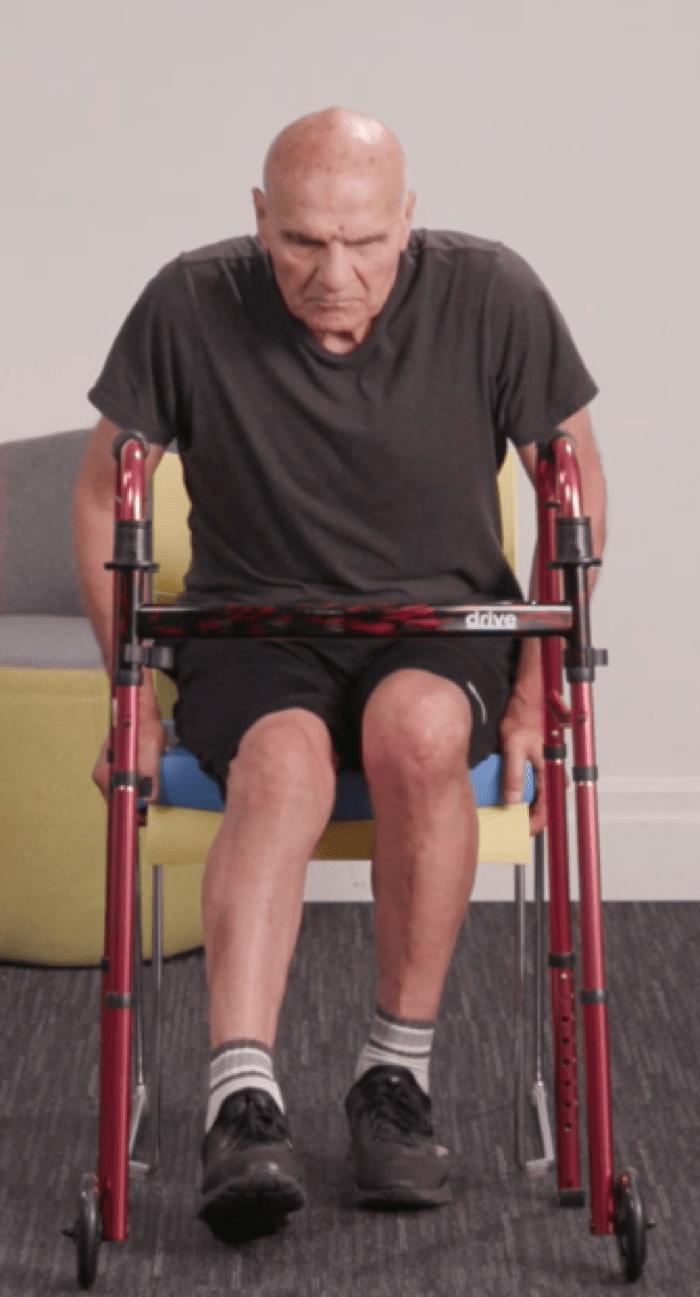
Learning how to stand up and sit down properly
Standing up from sitting step by step
- Have your walker positioned in front of your chair with enough room to stand up but not too far away that you can’t reach it when standing [1]
- Sit up and place your hands on the arm rest or sides of the chair [1]
- Lean forward slightly and push off with your arms to help get you up [1]
- Once standing place your hands on your walker securely and stand up straight [1]
Note to everyone: Never use the walker for support when trying to stand- It can cause you to fall!
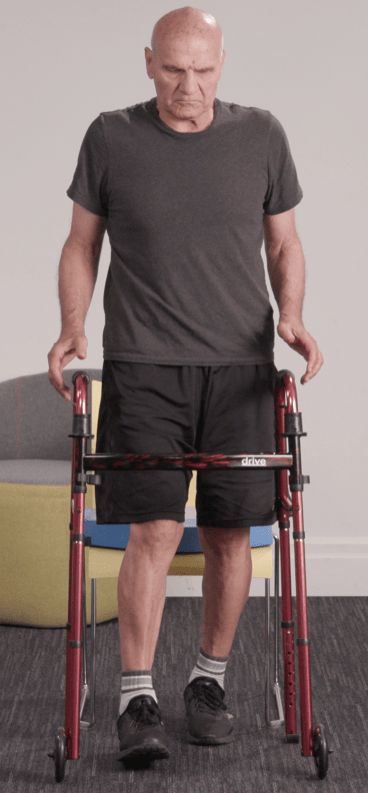
Sitting down from standing step by step
- Carefully reverse and back yourself up until the back of your legs are against the chair [1]
- Place one hand behind you to find the arm rest while one hand stays on the walker [1]
- Place the other hand behind you once you’ve found the arm rests and slowly lower yourself with your weight on your legs and arms [1]
Note for hip precautions: Do not sit down on a surface that is too low, to avoid this place a firm cushion on a chair or use a raised toilet seat as an easy way to elevate a surface comfortably [5]
Note for hip precautions: Do not excessively lean when sitting down, try and stay as upright as possible like in the picture below.
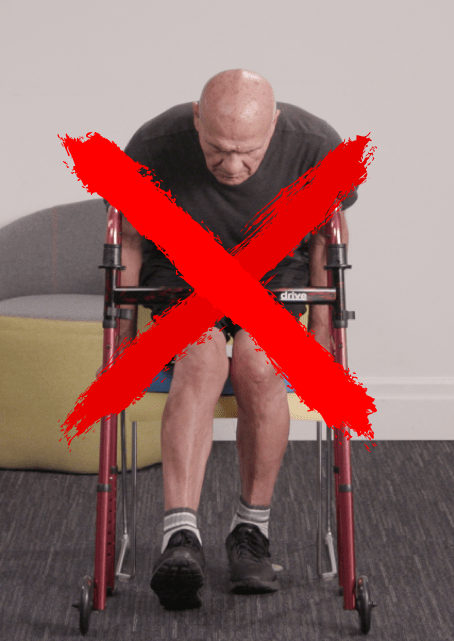
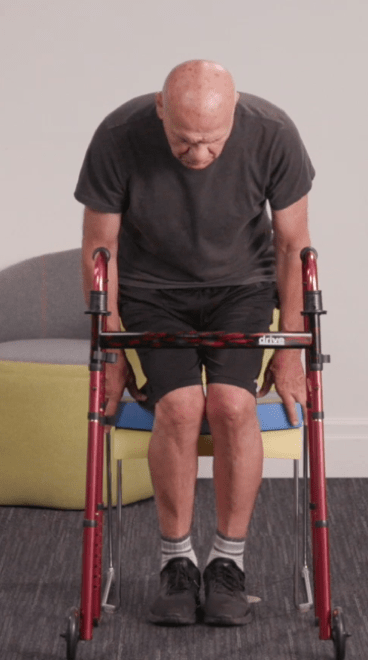
Getting in and out of bed properly
Getting out of bed step by step
- Have your walker positioned beside your bed on the side of your surgically operated leg [4]
- Push yourself up in bed using your arms [4]
- Swing your operated leg out to the side of the bed toward your walker [4]
- Push with your good leg until you are sitting at the edge of the bed [4]
- Lean forward slightly and push off with your arms to help get you up to standing [4]
- Once standing place your hands on your walker and stand up straight [4]
Note for hip precautions: Avoid sitting up completely straight, just slightly prop yourself up with your arms
Note for hip precautions: To make sure your operated leg doesn’t move past midline using a pillow between your legs may help avoid this or carefully using your arms to guide your leg out of bed [5]
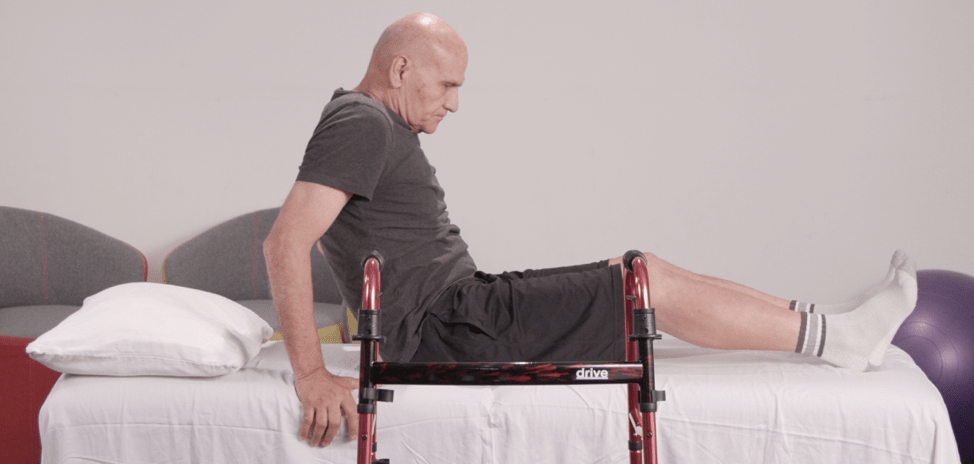
Getting into bed step by step
- Carefully reverse and back yourself up until the back of your legs are against the bed[4]
- Keep one hand on your walker and reach back with your other hand on to the bed[4]
- Once you have found the bed with one hand reach back with the other hand that was on your walker and begin to lower yourself down to the bed in sitting[4]
- Swing your good leg onto the bed by leaning backward and lifting it upwards and follow it by bringing your bad leg until both legs are on the bed[4]
- Once on the bed use your good leg and arms to position yourself into bed comfortably in lying [4]
Note for hip precautions: Make sure your bed is not too low when you are getting into it!
Note for hip precautions: You can do this by either moving both legs together or using your arms to guide your operated leg into bed.
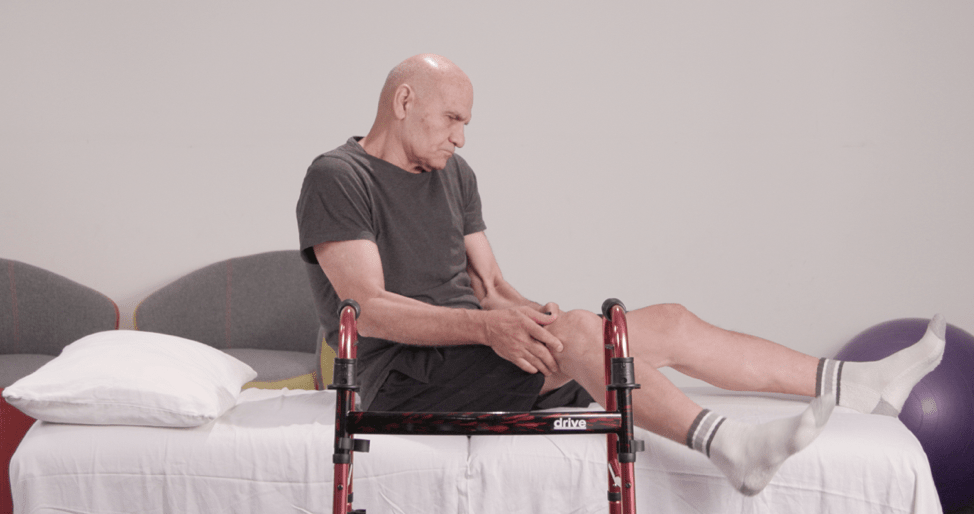
The Curovate app is an evidence-based app that will provide you with online physical therapy treatment, physical therapy plans, guided video exercises, ways to measure and monitor your progress, and much more! If you need further customized assistance during your surgery or injury recovery check out our Virtual Physical Therapy page to book your 1-on-1 video session with a physical therapist. Download the Curovate App by clicking on the links below.
 |
 |
|---|
Other recommended blogs
- How To Use Your Walker Safely After Knee Replacement or Hip Replacement Surgery
- How to use a walker and safety tips part 1: Learning the basics
References
1. Cleveland Clinic medical professional. (2019). How to use a walker.
2. Lompoc Valley Medical Center. (N.d.). Total knee precautions.
3. Physiopedia. (N.d.). Hip precautions.
4. Saint Luke's. (N.d.). Hip safety: Getting into and out of bed.
5. Sunnybrook Holland Centre. (2021). A guide for patients having hip or knee replacement.







